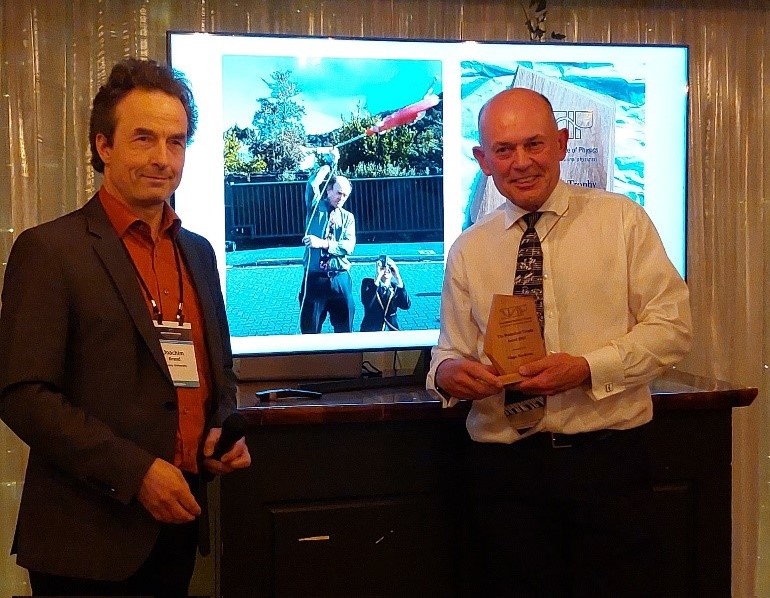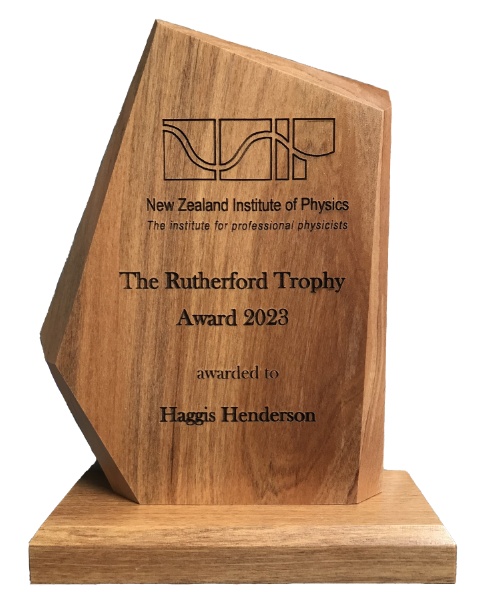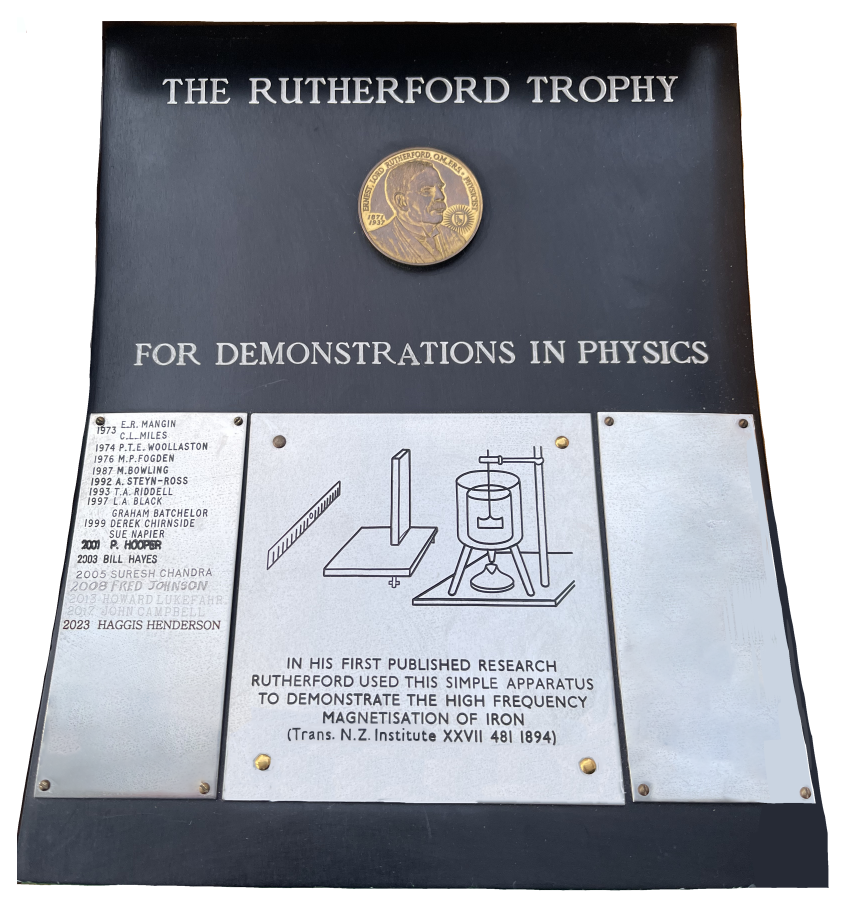The New Zealand Institute of Physics (NZIP) announced the winners of three prestigious awards at the Institute’s biennial conference on July 4 2023. The awards were presented by the NZIP President, Prof. Joachim Brand.
Prof. Brand lauded the achievements of each of the award winners. “It’s fantastic to be able to recognise three such prominent members of Aotearoa’s physics community. David, Cather and Haggis have all made an indelible impact on New Zealand, and in quite different ways. We’d also like to congratulate all applicants for this year’s awards – the standard was very high and reflects the importance of physics for New Zealand.”
Prof. Brand was also excited about the revamped structure of the NZIP awards, adding “we’ve consulted widely within the Institute to modernise the awards criteria and application procedures, and we’re really happy with the results. In particular, we have a new award that allows us to reward important achievements that otherwise can go unrecognised, Te Tohu mō te Whaihua i te Mātai Ahupūngao – the Physics Impact Award.”
The 2023 Dan Walls Medal was
awarded to Prof David Wiltshire (University of Canterbury).
This medal is presented biennially to the physicist working in New Zealand who is deemed to have made the greatest impact nationally and/or internationally in their field through predominantly New Zealand based research.
Prof. Wiltshire has made significant contributions to gravitational physics and cosmology. In particular, he has re-examined the foundations of Einstein’s theory of gravity, in seeking an answer to cosmology’s biggest mystery: “dark energy”, which standard theories say makes up 70% of the present universe. Prof. Wiltshire’s proposal incorporates a modification of the average geometry produced by complex matter structures. Stars, galaxies, and galaxy clusters – where space is not expanding – are grouped into expanding filaments, sheets and knots. These thread and surround huge very empty expanding voids in what is termed the “cosmic web”. Prof. Wiltshire’s proposed timescape cosmology refines our understanding of the difference between motion and expansion on these largest scales. It yields testable predictions which will be probed by the European Space Agency’s Euclid satellite, launched on 1 July 2023 on a Falcon 9 rocket.
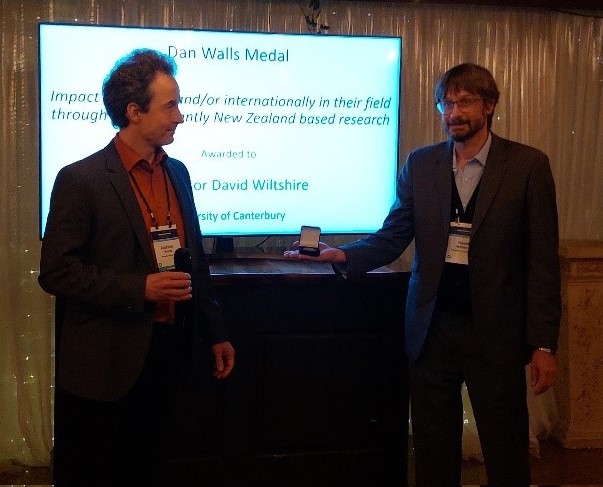
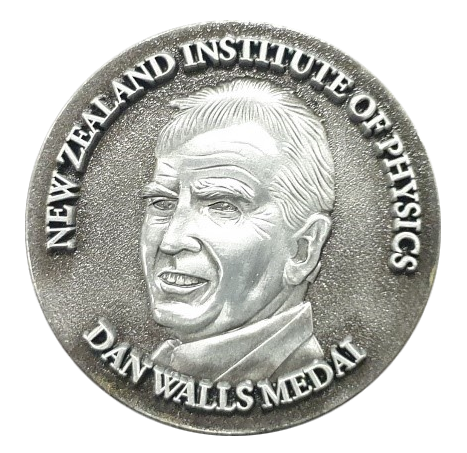
Te Tohu mō te Whaihua i te Mātai Ahupūngao – Physics Impact Award was awarded to Prof Cather Simpson (University of Auckland).
Prof. Simpson is the inaugural
recipient of this biennial award, which recognises an individual (or team) who
makes a significant contribution to the field of physics and its impact in New
Zealand.
Prof. Simpson’s achievements are
numerous and well-known throughout the physics and wider research communities
in Aotearoa. In particular, she has made an unprecedented contribution to
commercialization of New Zealand physics research. In 2010, she founded the
Photon Factory, a research hub based on ultrafast lasers. The Photon Factory has
attracted millions of dollars in commercial contracts and research grants and has
inspired the development of multiple research projects with high commercial
impact. Prof. Simpson’s successful start-up ventures include Engender
Technologies and Orbis Diagnostics, and she currently has two more biomedical
spinoff companies in the pipeline. She is a partner for the deep-tech
investment company Pacific Channel, and serves on the Board for Fisher and
Paykel Healthcare. Prof. Simpson has a passion for teaching and mentoring
undergraduate and postgraduate students that has been recognised by the Ako
Aotearoa national teaching excellence award. Throughout her career, Cather has
been a strong advocate for diversity in science, women in science, and ethics
in education and research.
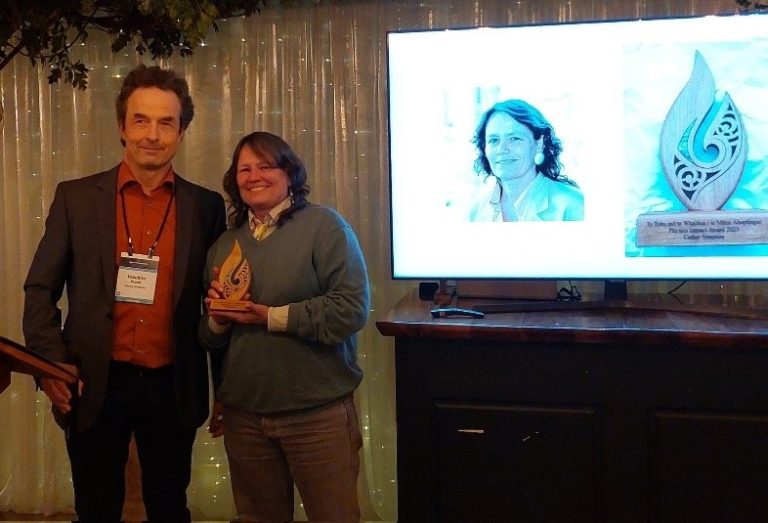
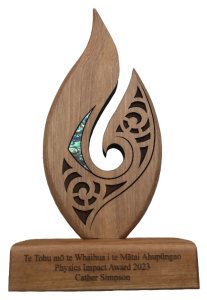
The Rutherford Trophy was awarded
to Tony “Haggis” Henderson (Whangārei Boys’ High School).
This trophy is awarded annually for innovation in physics education that enhances New Zealand students’ understanding of physics or participation in physics education, and shows a strong link to the teaching or practice of physics experiments.
Mr Henderson has a long-standing connection with promoting the practical applications of physics. He developed a crane physics unit of study for assessment in the 1990s. Since that time he has been a regular contributor to teacher meetings and NZIP conferences where his blend of performance, humour, humility and enthusiasm combined with clever practical uses of physics has made a positive contribution to physics education in New Zealand. His practical demonstrations have ranged from how to embed the physics of musical instruments into the curriculum, to farm physics. Haggis is a pillar of the physics teaching profession whose love of teaching physics through demonstrations is well known across New Zealand.
